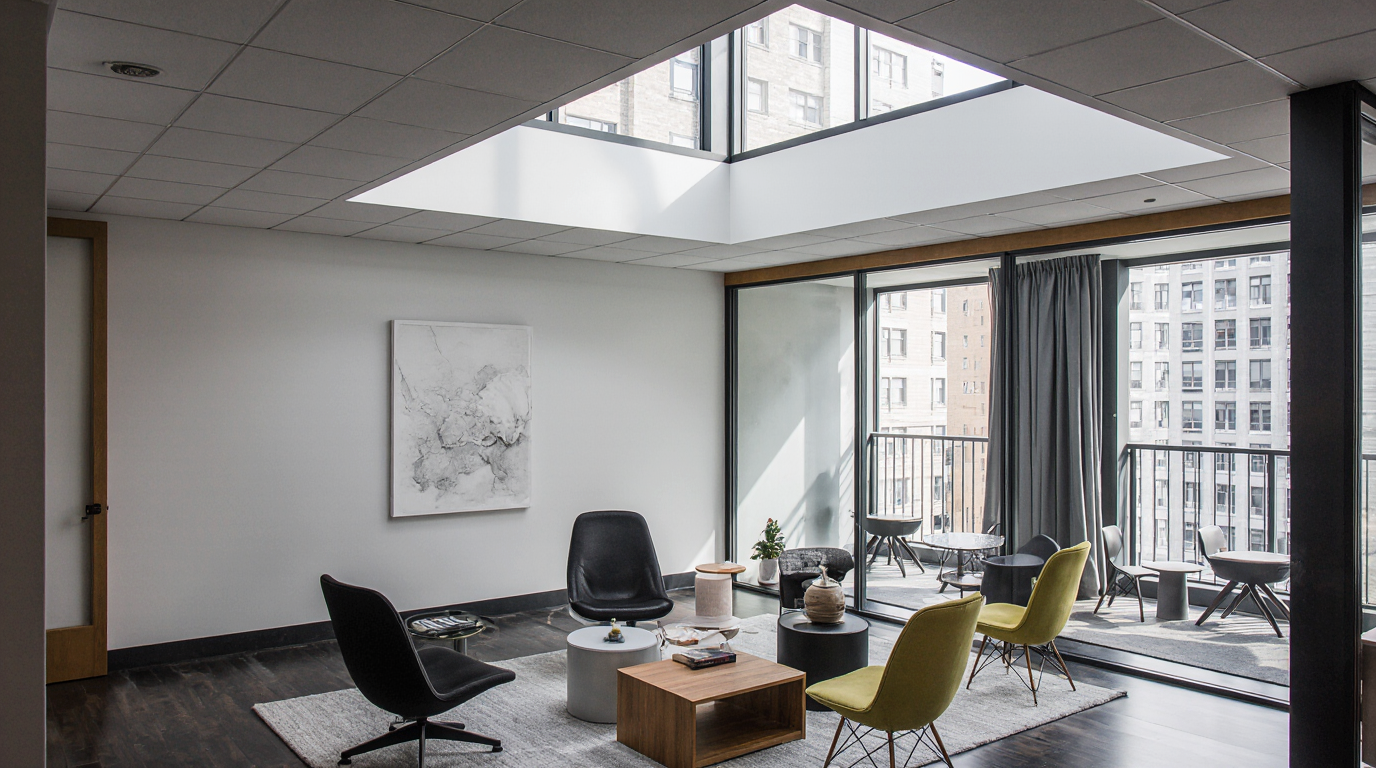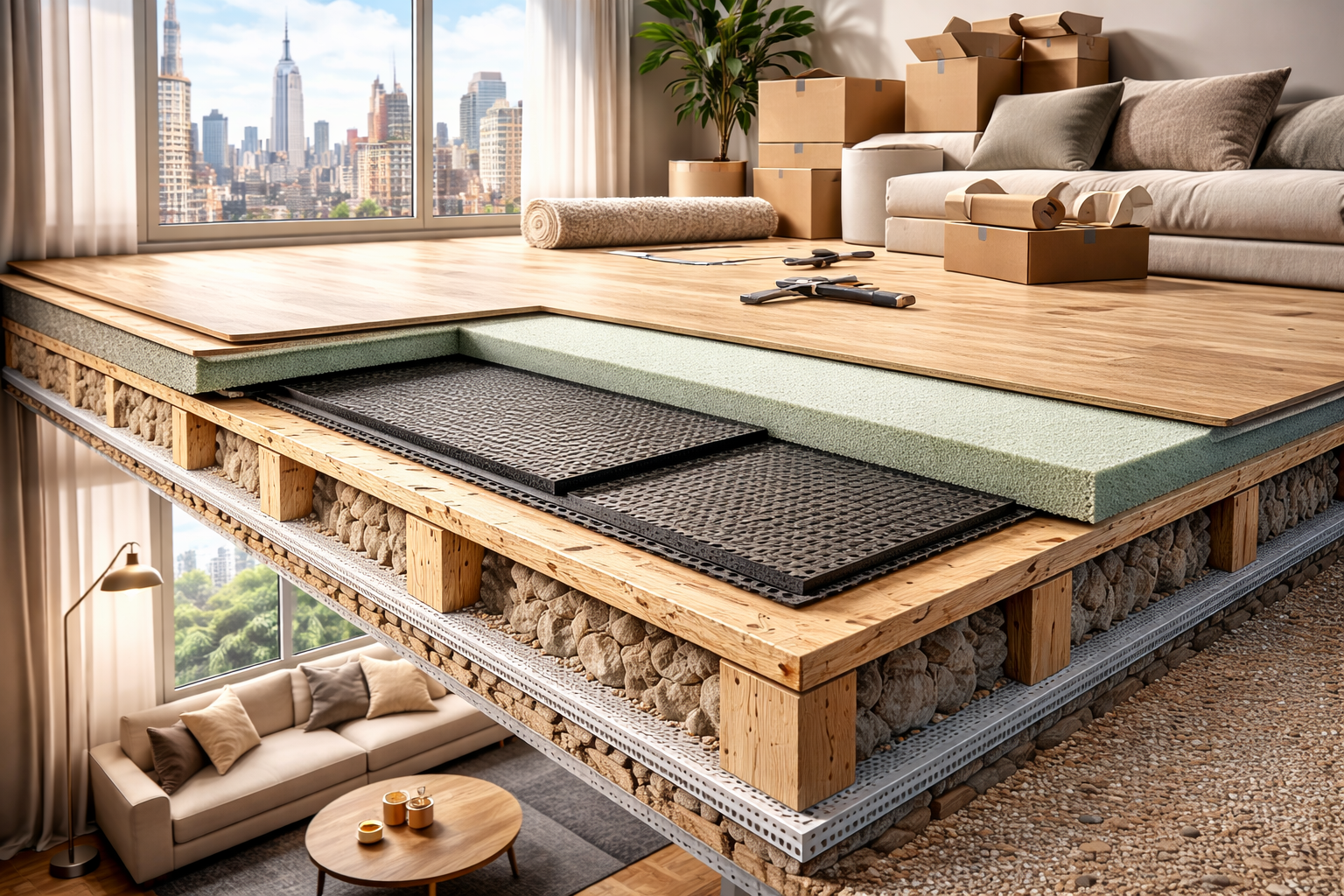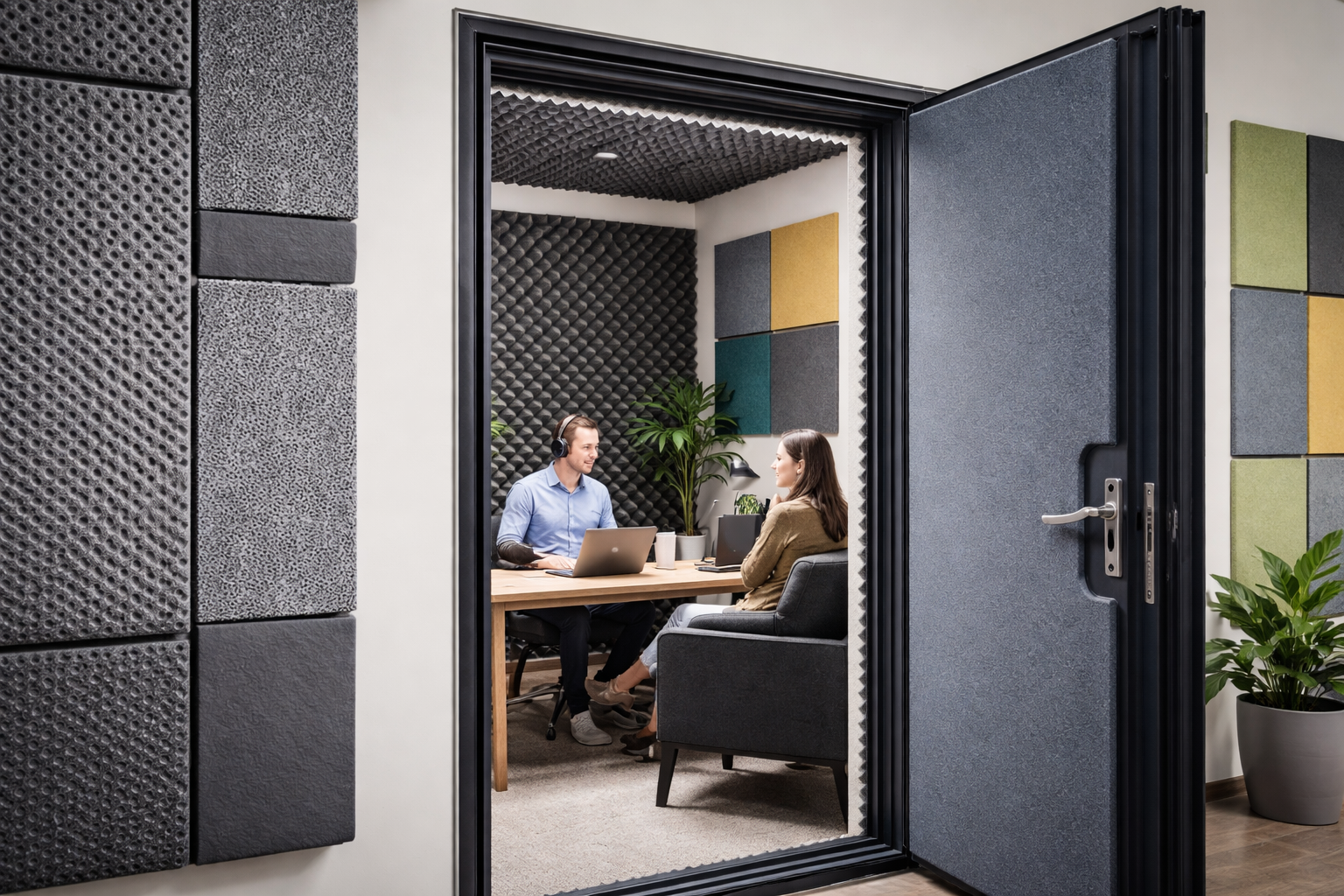What is a Drop Ceiling and Why It Matters for Your Space
In a city like New York, where every inch of space counts and noise is a constant battle, choosing the right ceiling system isn't just cosmetic—it's practical. Whether you're fitting out an office, restaurant, or studio, the ceiling plays a huge role in sound control, lighting, and access to utilities.
So, what is a drop ceiling, and why do so many New Yorkers use it in their spaces? Let's get into it.
What is a Drop Ceiling
A drop ceiling, also known as a suspended ceiling, is a secondary ceiling installed below the main structural ceiling. It's designed to hide wires, pipes, ductwork, and other mechanical systems while improving room acoustics and aesthetics.
Unlike drywall, which is fixed and permanent, drop ceilings are modular and accessible. That makes them ideal for commercial spaces, renovations, and any area where performance and flexibility matter.
Definition and Basic Structure
At its core, a drop ceiling is a lightweight grid framework suspended from the overhead structure using wires. Square or rectangular tiles are then dropped into the grid to form the visible ceiling.
This type of ceiling became popular in commercial buildings in the mid-20th century and is still widely used today because of its simplicity, affordability, and functionality.
Key Components of Drop Ceiling Systems
A typical drop ceiling system includes:
- Main runners. Long metal strips that form the backbone of the ceiling grid.
- Cross tees. Shorter metal pieces that snap into the main runners to create a grid of openings.
- Hanger wires. Attached to the structural ceiling to suspend the entire system at a specific height.
- Ceiling tiles or panels. Lightweight panels that rest inside the grid. These can be made of different materials, each offering different acoustic and visual benefits.
All components work together to create a ceiling that's easy to install, easy to maintain, and easy to customize.
How Drop Ceilings Differ from Traditional Drywall Ceilings
Drywall ceilings are built to last—but that's not always a good thing. If you ever need to access plumbing, electrical lines, or HVAC systems, you'll be tearing into drywall and incurring additional repair costs.
Drop ceilings are different. Need to get above the ceiling? Just lift a tile. Want to swap out a stained panel or upgrade acoustics? It takes minutes.
That flexibility makes drop ceilings the smart choice for busy commercial environments and high-demand residential spaces.
Types of Drop Ceiling Systems
There's no one-size-fits-all when it comes to drop ceilings. From budget-friendly grid systems to high-end designer panels, the variety gives you options for every type of space and style.
Standard Grid Systems
This is the most common type you'll see in New York offices, basements, schools, and clinics.
In a standard grid system, the metal framework is exposed and clearly visible. Tiles simply drop into the open grid. These systems are affordable, fast to install, and easy to maintain. If the function is your priority, this setup delivers.
Concealed Grid Options
For a cleaner, more modern look, concealed grid systems use tiles that hide the supporting grid. These tiles slide into place and overlap the structure, creating a smooth, seamless appearance.
We often recommend this style in client-facing spaces—like conference rooms or upscale reception areas—where appearance is just as important as performance.
Custom Designer Panels
If you're designing a statement space, custom ceiling panels can significantly transform the room's ambiance. These go beyond function and aesthetics, blending shape, color, material, and even integrated lighting or acoustic control.
At New York Soundproofing, we work with architects and designers to deliver ceilings that are as bold and functional as the rest of the space. Whether you want warm wood textures or minimalist acoustic fabric, we can make it happen.
Acoustic Benefits of Drop Ceilings
In a city that never sleeps, noise is a constant challenge. Whether it's foot traffic from the floor above or echoes bouncing around a high-ceilinged room, drop ceilings provide a practical way to control your acoustic environment.
Sound Absorption Properties
Drop ceiling tiles are often made with porous materials like mineral fiber or fiberglass, which absorb sound energy rather than reflect it. This reduces the overall noise level in a room and makes conversations clearer.
In office settings, that means fewer distractions. In residential spaces, it means less noise transfer between rooms. The right ceiling tile can make a surprising difference in how quiet and calm a space feels.
Echo Reduction in Large Spaces
In wide, open rooms like lobbies, gyms, or conference halls, sound tends to bounce. The result? Echoes that make it hard to hear clearly.
Drop ceilings break up those sound waves. By installing acoustic tiles with the right NRC (Noise Reduction Coefficient), you reduce reverb and improve speech intelligibility.
At New York Soundproofing, we often install these systems as part of our acoustic treatment solutions for event spaces, studios, and retail environments where clear audio is critical.
Noise Control Between Floors
One of the biggest benefits of drop ceilings is how they help block sound from traveling between levels.
This matters in NYC, where mixed-use buildings are common and residential units often sit above or below noisy commercial spaces. Adding acoustic insulation above the tiles—such as mass-loaded vinyl or dense mineral wool—further boosts sound isolation.
When combined with soundproofing techniques on the floor above, drop ceilings become a powerful layer in a full noise-control strategy.
Drop Ceiling Materials and Their Impact on Acoustics
Not all tiles are created equal. The material you choose affects the appearance of your ceiling and its acoustic performance.
Mineral Fiber Tiles for Sound Control
These are the most common ceiling tiles used in commercial buildings. They're lightweight, affordable, and offer good sound absorption.
Ideal for offices, classrooms, and waiting areas, mineral fiber tiles are available in various textures and thicknesses to suit your needs and budget.
We use them often because they balance performance and price—especially in multi-room builds.
Metal Panels for Commercial Applications
For modern industrial spaces or high-traffic areas, metal panels can be the right choice. They're more durable and resistant to moisture, making them suitable for kitchens, labs, and transit hubs.
On their own, metal tiles reflect sound. But with acoustic backing or perforated designs, they can still provide effective sound control while offering a sleek, professional look.
Specialty Acoustic Tiles for Professional Environments
In studios, hospitals, and boardrooms, sound quality is non-negotiable. That's where high-performance acoustic tiles come in.
These tiles are engineered to control both mid- and high-frequency sound. Some options even combine thermal insulation and antimicrobial coatings.
At New York Soundproofing, we install specialty tiles in music production spaces, private clinics, and premium office suites—where sound control and aesthetic quality must work hand in hand.
Common Applications in NYC Buildings
Drop ceilings aren't one-size-fits-all. But they do fit incredibly well in a wide range of NYC interiors—from startups in SoHo to hospitals in the Bronx. Here's where we install them most.
Office Spaces and Conference Rooms
Noise distractions can wreck productivity. Drop ceilings help by absorbing ambient sound, lowering stress, and boosting focus.
They also allow easy integration of lighting, HVAC vents, sprinklers, and data lines—all essential in modern workspaces.
For boardrooms or open-plan offices, we often recommend combining acoustic ceiling tiles with sound-masking systems as part of our office soundproofing approach for best results.
Retail and Restaurant Environments
Acoustics in retail and food service can impact the customer experience.
In restaurants, drop ceilings help dampen kitchen clatter and conversation noise. In retail, they create a calmer shopping atmosphere and improve staff communication.
Plus, drop ceilings make it easier to adjust lighting or branding elements seasonally—something every NYC retailer appreciates.
Healthcare and Educational Facilities
Hospitals, clinics, and schools demand acoustic performance, durability, and hygiene.
Drop ceilings with antimicrobial tiles help meet health codes while improving comfort for patients, students, and staff. In classrooms, they help keep the focus on learning—not hallway noise.
We've worked on several NYC medical and educational projects as part of our commercial soundproofing services, where drop ceilings played a crucial role in enhancing acoustic performance and functionality.
If you're still wondering what is a drop ceiling—it's more than just a design detail. It's a smart, flexible system that impacts how your space looks, sounds, and functions.
At New York Soundproofing, we design and install drop ceiling systems that deliver real performance—acoustically and visually. Whether you need quiet, style, or access to what's above, we'll help you make the right call.
Let's talk about what your space needs—and how a drop ceiling can make it better.



